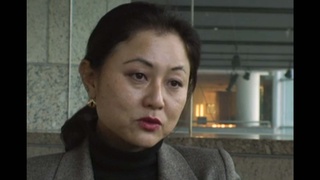Interviews
Memories of dusty conditions at Minidoka incarceration camp
It was very, very dusty. The dust was powdery fine and if I recall, it was about 3 or 4 inches deep. So you just, every time you take a step, you would just have a puff of smoke -- I mean, of dust -- and if you have even the slightest breeze... wow, you're in, like a fog. And when you go to the mess hall to eat, of course, when you chew the food, you can... you can feel the grit of the sand. And it's amazing, even that, you get used to it. I gradually got used to the mixture of sand and food.
Date: August 18, 1997
Location: Washington, US
Interviewer: Lori Hoshino, Stephen Fugita
Contributed by: Denshō: The Japanese American Legacy Project.
Explore More Videos

Japanese American railroad workers are fired following the bombing of Pearl Harbor
(b. 1923) Chick sexer

A racist encounter at a movie theater following the bombing of Pearl Harbor
(b. 1923) Chick sexer

Encountering a train full of Japanese Americans being transported to a concentration camp
(b. 1923) Chick sexer


Joined Japanese Imperial Army during the WWII (Spanish)
(b. 1929) Nisei Argentinean


Donating clothes to the Japanese interns (Japanese)
(1900–1996) The mother of Nikkei Brazilian immigration

Relief fund to support Japanese communities (Japanese)
(1900–1996) The mother of Nikkei Brazilian immigration

Role of Assistancia Social dom Jose Gaspar (Japanese)
(1900–1996) The mother of Nikkei Brazilian immigration

Interrogation by police (Japanese)
(1900–1996) The mother of Nikkei Brazilian immigration

Concentration camp from a Japanese mother’s point of view (Japanese)
Shin-Issei from Gifu. Recently received U.S. citizenship

No immediate impact after Pearl Harbor
(b. 1928) Doctor. Former Chair of the Japanese Canadian Redress Foundation.

Treatment of Japanese fishermen in Canada during World War II
(b. 1928) Doctor. Former Chair of the Japanese Canadian Redress Foundation.

Government's permission to publish Japanese newspaper in Canada during World War II
(b. 1928) Doctor. Former Chair of the Japanese Canadian Redress Foundation.

Japanese newspaper supported by Canadian government during World War II
(b. 1928) Doctor. Former Chair of the Japanese Canadian Redress Foundation.
